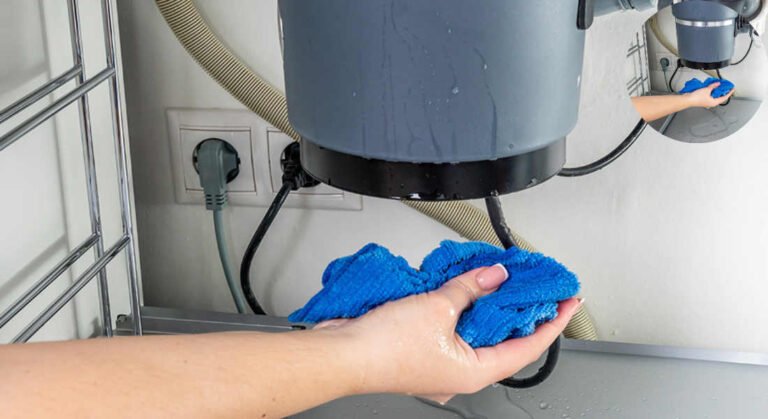A kitchen sink disposal is one of the most convenient appliances in modern households. It helps manage food waste efficiently, keeps the kitchen clean, and prevents clogs in the plumbing system. However, like any appliance, it can sometimes stop working, leaving you frustrated and unsure of how to fix it.
Understanding Your Kitchen Sink Disposal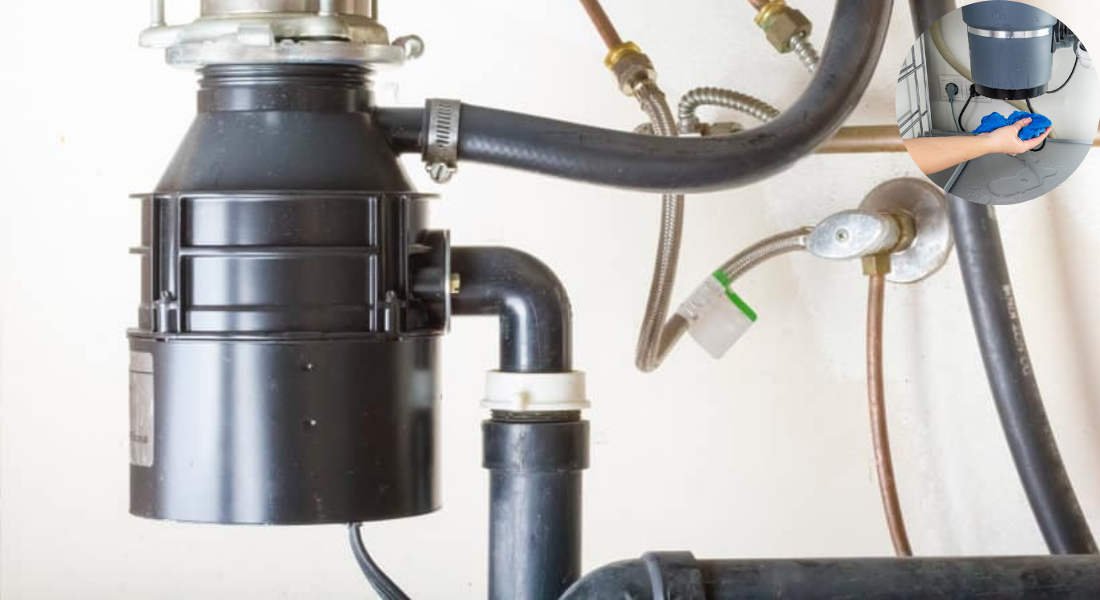
Before starting the reset process, it’s important to understand how your kitchen sink disposal works and why it might need to be reset.
What Is a Kitchen Sink Disposal?
A kitchen sink disposal is a small motorized device installed underneath the sink. It’s designed to grind food waste into tiny particles that can be flushed away through your plumbing system. The disposal uses an impeller (a spinning metal plate) to break down scraps, preventing them from clogging your pipes.
Common Problems That Cause Disposal Issues
Like any appliance, sink disposals occasionally encounter problems. Here are some common reasons your disposal might stop working:
- Jams: Food items like bones, fruit pits, or fibrous vegetables (e.g., celery) can jam the impeller, stopping it from spinning.
- Overheating: If the disposal runs for too long or processes too much food at once, it can overheat and shut off automatically.
- Clogs: Grease, coffee grounds, or non-food items can clog the pipes or inner mechanisms.
- Electrical Issues: Power surges or faulty wiring can interrupt the disposal’s function.
In most cases, resetting your disposal is the first step in resolving these problems.
Safety Precautions Before Resetting Your Disposal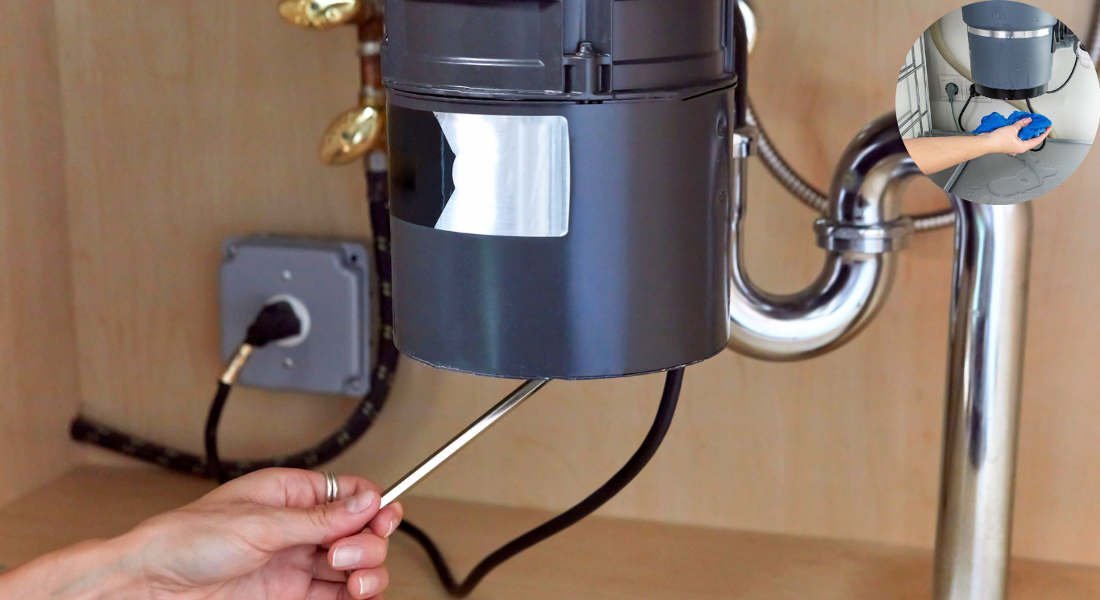
Resetting a garbage disposal is simple, but safety should always come first. Since disposals involve sharp components and electricity, taking precautions can prevent injuries or damage.
Turn Off the Power
The first and most important step is to disconnect the disposal from its power source. This ensures you won’t accidentally turn it on while working on it.
- Unplugging: If your disposal is plugged into an outlet under the sink, unplug it.
- Circuit Breaker: If it’s hardwired, you’ll need to flip the corresponding switch on your home’s circuit breaker panel.
Gather the Right Tools
Having the right tools on hand will make the process safer and more efficient. Here’s what you might need:
- Flashlight: To see inside the disposal unit.
- Allen Wrench (Hex Key): Most disposals come with a small wrench for manually turning the impeller.
- Pliers: This is for safely removing any visible obstructions.
- Gloves: To protect your hands from sharp edges or debris.
Avoid Putting Your Hands Inside the Disposal
No matter how tempting it may be, never stick your hand directly inside the disposal. Use tools like pliers or tongs to remove obstructions safely.
How to Locate the Reset Button on Your Sink Disposal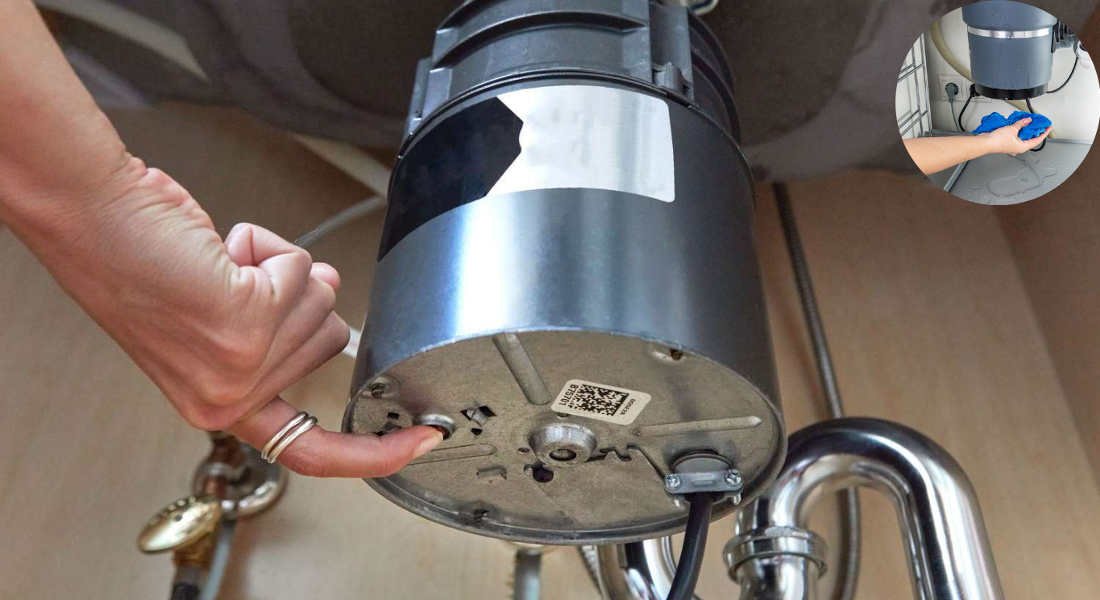
Most kitchen sink disposals have a reset button, which acts as a built-in safety mechanism. If the unit overheats or encounters a jam, the button trips and stops the motor from running.
Typical Locations of the Reset Button
The reset button is usually located at:
- On the bottom of the disposal unit.
- It is on the side of the unit, near the base.
- Underneath the sink, in hard-to-see areas.
What Does the Reset Button Look Like?
The reset button is typically small, circular, and red. Once you know where to look, it’s easy to identify. If you can’t find it, refer to your disposal’s user manual or visit the manufacturer’s website for specific guidance.
You may also read (do you pay taxes on manufactured homes).
Step-by-Step Guide: How to Reset House Kitchen Sink Disposal
Now that you’re prepared let’s go through the reset process step by step.
Turn Off the Power
As mentioned earlier, disconnect the disposal from its power source. This ensures your safety throughout the process.
Check for Visible Obstructions
Using a flashlight, inspect the disposal for visible food scraps or debris. Then, use pliers or tongs to remove these items carefully.
Locate and Press the Reset Button
Once the disposal is clear of obstructions, locate the reset button (typically on the bottom or side of the unit). Press the button firmly until you hear or feel a click.
Wait for a Cooling Period
If the reset button pops out again immediately, give the unit 10–15 minutes to cool down before trying again. Overheating can cause the reset button to trip repeatedly.
Restore Power and Test
Reconnect the power supply (plug it back in or flip the circuit breaker) and test the disposal by running cold water and turning it on. If it hums or works as expected, the reset is successful.
How to Unjam a Garbage Disposal (If Resetting Isn’t Enough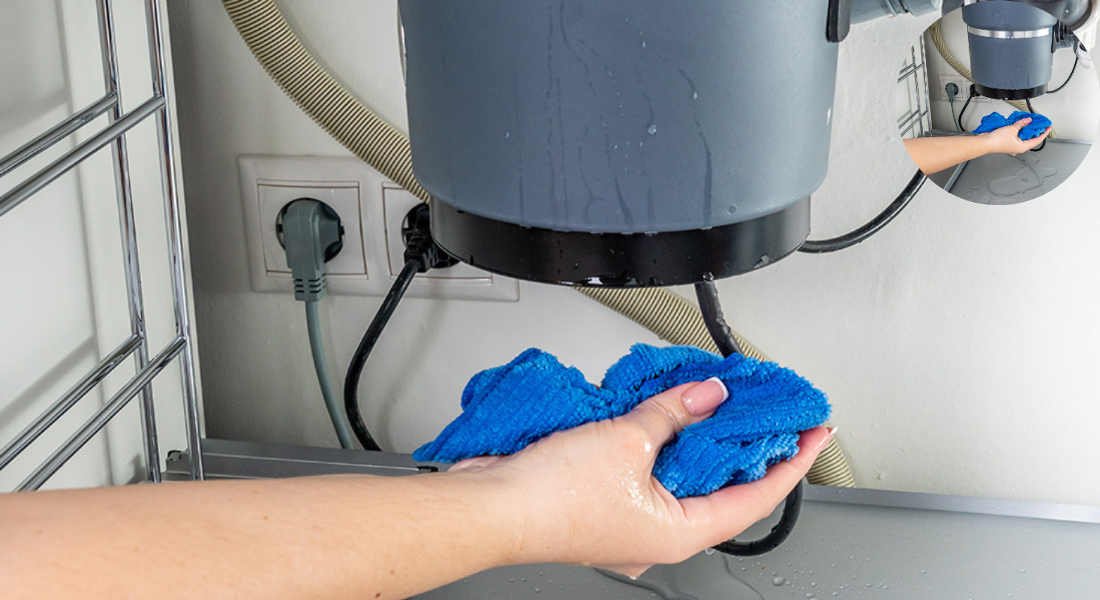
Sometimes, resetting your disposal isn’t enough to fix the problem. If the unit hums but doesn’t spin, it may be jammed.
Signs of a Jam
- A humming noise when the disposal is turned on.
- The impeller doesn’t spin when running.
How to Free the Impeller
- Turn Off Power: As always, disconnect the power first.
- Use an Allen Wrench: Insert the wrench into the small hex-shaped hole located at the bottom of the disposal.
- Manually Turn the Impeller: Rotate the wrench back and forth to loosen any obstructions.
- Remove Debris: Carefully remove any remaining debris using pliers.
Safety Tips
- Never use your hands to free the impeller.
- Avoid forcing the wrench too hard, as this could damage the unit.
Troubleshooting Common Disposal Problems
If resetting and unjamming don’t solve the issue, consider these additional troubleshooting tips:
ProblemPossible CauseSolution
Disposal won’t turn on Power issue Check outlet, circuit breaker, or reset button.
Humming noise Jammed impeller Use an Allen wrench to free the jam.
Leaks under the sink Loose connections or cracks Tighten fittings or replace the unit.
Bad odor Food buildup Clean with a mixture of vinegar and baking soda.
Maintenance Tips to Prevent Future Disposal Issues
Preventing problems is always easier than fixing them. Follow these tips to keep your kitchen sink disposal in top shape:
Proper Usage
- Avoid putting hard items like bones or fruit pits into the disposal.
- Never pour grease or oil down the drain.
Regular Cleaning
- Monthly Cleaning: Use a mixture of ice cubes and rock salt to clean the impeller.
- Odor Removal: Pour a mix of vinegar and baking soda into the disposal, then rinse with hot water.
Avoiding Jams
- Cut large food scraps into smaller pieces before disposal.
- Run cold water while using the disposal to flush debris properly.
When to Call a Professional Plumber
If you’ve tried everything and your disposal still isn’t working, it might be time to call in an expert.
Signs You Need Professional Help
- The disposal doesn’t turn on despite multiple resets.
- There’s visible damage to the unit or leaks.
- You hear unusual grinding or squealing noises.
Finding a Reliable Plumber
Look for licensed plumbers with good reviews in your area. Ask friends or neighbors for recommendations, and always request a cost estimate before agreeing to repairs.
You may also read (kitchen drawers at home).
